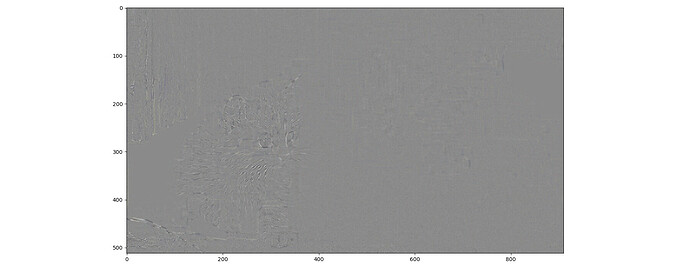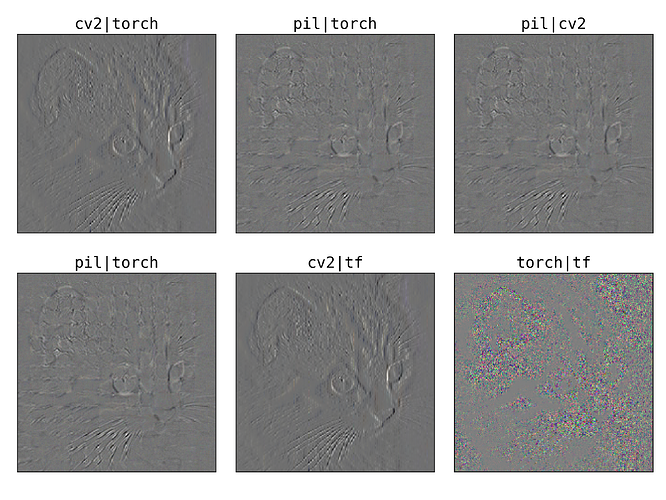example
differences appear minor, but they change benchmarking results
import io
import requests
import numpy as np
import PIL
import matplotlib.pyplot as plt
import torch
from torch.nn.functional import interpolate

def test_dif(dtype="float64", mode="bilinear", show=False):
sig = lambda x, msg="": print("%s\tmin: %.4f, max: %.4f mean: %.4f, std: %.4f \tshape: %s, dtype: %s"%(msg, x.min(), x.max(), x.mean(), x.std(), str(tuple(x.shape)), str(x.dtype)))
url = ("https://ichef.bbci.co.uk/news/976/cpsprodpb/10207/production/_116155066_campercats.png")
pimg = PIL.Image.open(io.BytesIO(requests.get(url).content))
tensor = torch.from_numpy((np.array(pimg)/255).astype(dtype)).permute(2, 0, 1).contiguous()
tensor = tensor.view(1, *tensor.shape)
print(dtype, mode, "Resize test vs interpolate, ", pimg.size)
new_size = [512, (512*pimg.size[0])//pimg.size[1]]
resample = {"bilinear":PIL.Image.BILINEAR, "bicubic":PIL.Image.BICUBIC}
pimg_sz = (np.array(pimg.resize(size=new_size[::-1], resample=resample[mode]))/255).astype(dtype)
ptensor = interpolate(tensor, size=new_size, mode=mode, align_corners=False)
sig(ptensor, msg=" interpolate() ")
sig(pimg_sz, msg=" Image.resize()")
if show:
ntensor = ptensor[0].numpy().transpose(1, 2, 0)
diff = ntensor - pimg_sz
diff = (diff - diff.min())/(diff.max() - diff.min())
plt.figure(figsize=(18, 7))
# plt.subplot(131)
# plt.imshow(pimg_sz)
# plt.subplot(132)
# plt.imshow(ntensor)
# plt.subplot(133)
plt.imshow(diff)
plt.tight_layout()
plt.show()
if __name__ == "__main__":
test_dif("float64", "bicubic")
test_dif("float32", "bicubic")
test_dif("float64", "bilinear")
test_dif("float32", "bilinear", show=True)
Result
float64 bicubic Resize test vs interpolate, (976, 549)
interpolate() min: -0.0877, max: 1.0536 mean: 0.3292, std: 0.2270 shape: (1, 3, 512, 910), dtype: torch.float64
Image.resize() min: 0.0000, max: 1.0000 mean: 0.3292, std: 0.2266 shape: (512, 910, 3), dtype: float64
float32 bicubic Resize test vs interpolate, (976, 549)
interpolate() min: -0.0877, max: 1.0536 mean: 0.3292, std: 0.2270 shape: (1, 3, 512, 910), dtype: torch.float32
Image.resize() min: 0.0000, max: 1.0000 mean: 0.3292, std: 0.2266 shape: (512, 910, 3), dtype: float32
float64 bilinear Resize test vs interpolate, (976, 549)
interpolate() min: 0.0000, max: 1.0000 mean: 0.3292, std: 0.2261 shape: (1, 3, 512, 910), dtype: torch.float64
Image.resize() min: 0.0000, max: 1.0000 mean: 0.3292, std: 0.2260 shape: (512, 910, 3), dtype: float64
float32 bilinear Resize test vs interpolate, (976, 549)
interpolate() min: 0.0000, max: 1.0000 mean: 0.3292, std: 0.2261 shape: (1, 3, 512, 910), dtype: torch.float32
Image.resize() min: 0.0000, max: 1.0000 mean: 0.3292, std: 0.2260 shape: (512, 910, 3), dtype: float32

